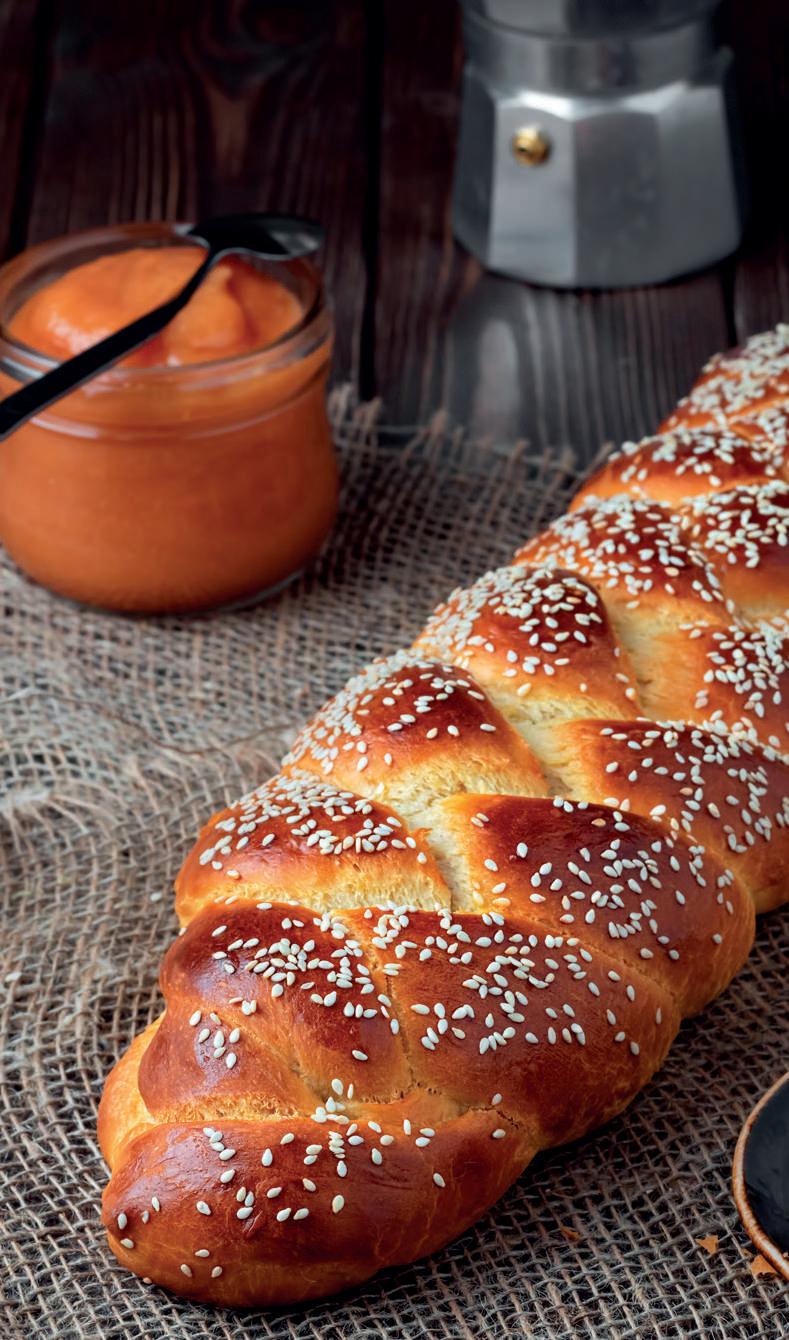
19 minute read
The best kosher food restaurants in the world

Los mejores restaurantes de comida kosher del mundo
Advertisement
Throughout history, Jewish gastronomy has travelled all over the planet, feeding each territory where its communities laid down roots. It is a cuisine with a strong family, traditional and religious essence, rooted in the kashrut laws. / A lo largo de la historia, la gastronomía judía ha viajado por todo el planeta, nutriéndose de cada territorio en el que sus comunidades establecían raíces. Se trata de una cocina con una fuerte esencia familiar, tradicional y religiosa, arraigada en las leyes del kashrut.
In order for a restaurant to be considered kosher (appropriate), the food must be preserved and served in line with these laws. Whether you are looking for leading kosher establishments for your travels, or you want to enjoy new culinary experiences, here we give you a list of six kosher restaurants where you can try authentic and delicious cuisine.
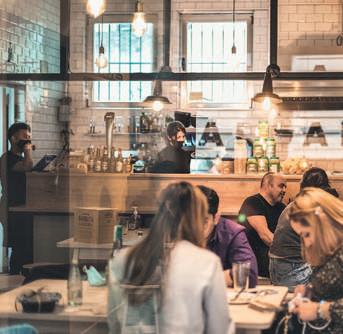
Barganzo, Madrid (Spain / España)
From finance manager and lawyer to owners of a restaurant which, according to El comidista (a means of reference for gastronomy in Spain), makes the best hummus in Madrid. Since they arrived in the capital in 2016, Tami and Aviv wanted to find the best way to stay. Barganzo was born from this desire and from their nostalgia for the flavours of Israel. With no previous experience, but with a great love of food, they launched this project which is now a flagship place to rediscover the deepest Mediterranean culture. The secret to their success? 100% fresh and kosher ingredients, spices from their country, passion and many hours at the stove.
De director financiero y abogada, a dueños del restaurante que, según El comidista —medio de referencia en España sobre gastronomía—, prepara el mejor hummus de Madrid. Desde que llegaron a la capital en 2016, Tami y Aviv quisieron encontrar la manera de quedarse. Barganzo nació de este deseo y de su nostalgia por los sabores de Israel. Sin experiencia previa, pero con mucho amor por la comida, se lanzaron con este proyecto que hoy es un lugar de referencia en el que redescubrir la cultura mediterránea más profunda. ¿El secreto de su éxito? Ingredientes 100% frescos y kosher, especias de su tierra, pasión y muchas horas frente a la olla.
Para que un restaurante sea considerado kosher (apropiado), la comida debe prepararse y servirse de acuerdo con estas leyes. Tanto si buscas establecimientos kosher de referencia para tus viajes, como si deseas disfrutar de nuevas experiencias gastronómicas, te traemos esta lista de seis restaurantes kosher en los que podrás probar una cocina auténtica y deliciosa.
Jacko Street , Jerusalem (Israel) / Jerusalén (Israel)
Choosing a kosher restaurant in the heart of Jerusalem is not easy, but it’s also difficult to resist the great ambience and atmosphere that are so prominent at Jacko Street (as well as its raviolis). The team define themselves as “Jerusalemites in love with the joy of living”, a spirit reflected both in their hospitality and in their colourful and flavoursome dishes. At Jacko Street, you will be able to enjoy generous home cooking with a gourmet touch. We recommend trying the delicious Kurdish ravioli, barbecued skewers and fricassee.
No es fácil decantarse por un restaurante kosher en pleno Jerusalén, pero resulta difícil resistirse al buen ambiente y a la atmósfera que reinan en Jacko Street (y también a sus raviolis). El equipo se define como “jerosolimitanos enamorados de la alegría de vivir”, un espíritu que se refleja tanto en su hospitalidad como en sus platillos, coloridos y llenos de sabor. En Jacko Street podrás disfrutar de una generosa cocina casera con un toque gourmet. Recomendamos probar los deliciosos raviolis kurdos, la brocheta de asado y el fricasé.
“Kosher cuisine, hospitality and design” is the premise of this haute cuisine restaurant situated in the heart of Manhattan. At Barnea Bistro, chef Joshua Kessler and his team prepare seasonal menus where the flavour, texture and presentation blend together to transform the act of eating into an immersive experience. It is a space designed to celebrate the senses and enjoyment of food. Don’t forget to delight in one of its signature cocktails on the charming terrace to round off a wonderful evening in style.
“Cocina kosher, hospitalidad y diseño” es la premisa de este restaurante de alta cocina ubicado en el corazón de Manhattan. En Barnea Bistro, el chef Joshua Kessler y su equipo preparan menús de temporada en los que sabor, textura y presentación confluyen para transformar el acto de comer en una experiencia inmersiva. Se trata de un espacio destinado a celebrar los sentidos y el disfrute de la comida. No olvides deleitarte con uno de sus cócteles de autor en su encantadora terraza para poner el broche final a la velada.

Millee’s Deli, Rose Bay (Australia)
“Cooking kosher recipes that taste like the ones your mother makes” is the aim of Dena Miller and Minette Lee, two lifelong friends that have run this establishment since 2015. What started out as a catering business —known as ‘Kosherlicious’— has become a landmark in Rose Bay, where you can enjoy exquisite homemade cuisine with the best kosher ingredients. A real delicatessen!
“Cocinar recetas kosher que sepan como las de una madre”, ese es el propósito de Dena Miller y Minette Lee, dos amigas de toda la vida que desde 2015 regentan este establecimiento. Lo que empezó como un negocio de catering —conocido como ‘Kosherlicioso’— se ha convertido en un lugar de referencia en Rose Bay, donde puedes disfrutar de una exquisita comida casera elaborada con los mejores ingredientes kosher. ¡Toda una delicatessen!
Kuli Alma, Frankfurt (Germany) / Fráncfort del Meno (Alemania)
Kuli Alma is a hidden gem in a residential neighbourhood of Frankfurt am Main. In this restaurant, you can try simple yet delicious cuisine which is both kosher and 100% vegan. The owner, Nir Rosenfield, is an activist committed to pouring his love for what he does into every recipe; from his restaurant he promotes a philosophy of eating and cooking while being more aware of our impact as consumers. A charming place to discover generous and hearty Jewish cuisine. You can’t miss out on its terrace if the weather is nice!
Kuli Alma es una gema escondida en un barrio residencial de Fráncfort del Meno. En este restaurante puedes probar una comida sencilla pero deliciosa, kosher y, además, 100% vegana. El dueño, Nir Rosenfeld, es un activista comprometido que vuelca en cada receta su amor por lo que hace; desde su restaurante promueve una filosofía de comer y cocinar siendo más conscientes de nuestro impacto como consumidores. Un lugar acogedor en el que descubrir una cocina judía generosa y con corazón. ¡No puedes perderte su terraza si hace buen tiempo!
Moshe Cube, Playa del Carmen (Mexico) / (México)
Located on the coast of the Riviera Maya is the city of Playa del Carmen, famous for its idyllic beaches and its coral reefs. Moshe Cube is situated in this wonderful setting, an Israeli and kosher restaurant and grill which has been open since 2000. Nowadays it is a landmark for locals and tourists where they can enjoy fresh ingredients, bold flavours, honest cuisine and an unforgettable atmosphere. Without a doubt, the perfect place to enjoy a unique culinary experience on your trip to the Caribbean coast.
Ubicada en el litoral de la Riviera Maya se encuentra la ciudad de Playa del Carmen, famosa por sus playas paradisíacas y sus arrecifes de coral. En este entorno idílico localizamos Moshe Cube, un restaurante y asador israelí y kosher que lleva activo desde el año 2000. Hoy es un lugar de referencia para locales y turistas en el que disfrutar de ingredientes frescos, sabores audaces, una cocina honesta y una atmósfera inolvidable. Sin duda, el sitio perfecto para tener una experiencia gastronómica diferente en tu viaje a la costa caribeña.
What is a kosher restaurant like?
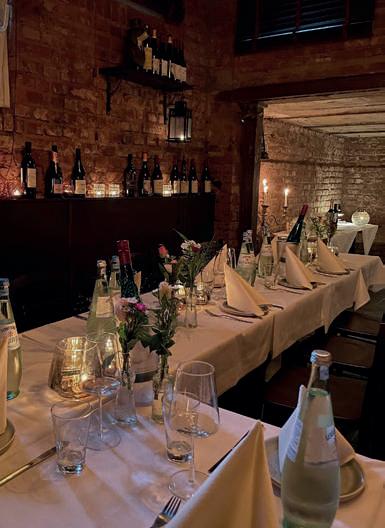
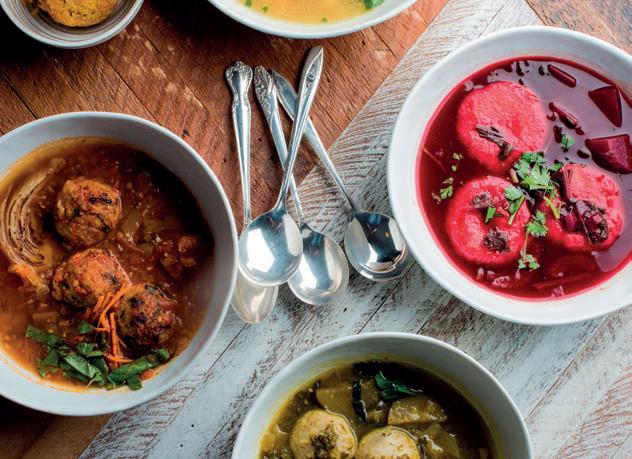
Kashrut laws are divided into kosher (appropriate), taref (prohibited) and pareve (neutral) foods. One of the main guidelines is that, when it comes to mammals, only ruminant, cloven-hoofed mammals can be eaten, while almost all poultry can be eaten except for 21 species described in the Talmud. Animals must be sacrificed in a specific way and mixing meat and milk is strictly prohibited, utensils even have to be swapped when handling these products.
There are other fundamental rules of the kashrut that kosher restaurants must strive to comply carefully with, in order to obtain the corresponding certification.


¿Cómo es un restaurante kosher?
Las leyes del kashrut dividen los alimentos en kosher (apropiados), taref (prohibidos) y parev (neutros). Una de las pautas principales es que, en cuanto a mamíferos, solo pueden comerse aquellos que sean rumiantes y tengan la pezuña partida, mientras que aves pueden comerse casi todas excepto 21 especies descritas en el Talmud. Los animales deben ser sacrificados de una manera concreta y está estrictamente prohibido mezclar carne y leche, cambiándose incluso los utensilios a la hora de manipular estos productos.
Existen otras reglas fundamentales del kashrut que los restaurantes kosher deben esforzarse por cumplir pulcramente para obtener la certificación correspondiente.
RECIPE / RECETA
PISTACHIO AND BERRY TART / TARTA DE PISTACHOS Y FRUTOS ROJOS

Alon Goldman
“Working in a professional setting has always been my priority. Since I became a pastry chef, I make sure I surround myself with the best. Bergner was, therefore, an obvious choice.”

“Trabajar en un entorno profesional ha sido siempre una prioridad para mí. Desde que soy chef de pastelería, me aseguro de rodearme de los mejores. Era, pues, natural elegir a Bergner.”
TIME: 0.25 H
DIFFICULTY: VERY EASY
INGREDIENTS 4 PEOPLE
CREAM OF ALMONDS WITH LEMON AND PISTACHIO
180 G BUTTER
100 G PISTACHIO PASTE
6 G LEMON ZEST
200 G ICING SUGAR
200 G RAW POWDERED ALMOND
200 G EGGS
10 G PLAIN FLOUR
Cream the butter, pistachio paste and lemon zest. Add the icing sugar and powdered almond. Mix and gradually add the eggs and the flour at the same time.
SWEET DOUGH
520 G PLAIN FLOUR
300 G BUTTER
2 G VANILLA POWDER
2 G FINE SALT
200 G ICING SUGAR
80 G ALMOND POWDER
100 G EGGS
Soften the butter on the blender blade, add the icing sugar, almond powder, fine salt and vanilla.
Add the flour, bind the ingredients together and finish with the eggs.
Leave the dough to rest in the fridge.
ASSEMBLY AND FINISH
Grease a baking tin with a thickness of 2.5 mm and decorate with the cream of almonds with lemon and pistachio and with the berries (strawberries, raspberries, blackcurrant, redcurrants and blackberries).
Bake for 35 minutes at 150 °C.
Once the tart has cooled, cover with the strawberries and decorate with crumble and icing sugar.
TIEMPO: 0.25H
DIFICULTAD: MUY FÁCIL
INGREDIENTES PARA 4 PERSONAS
CREMA DE ALMENDRAS CON LIMÓN Y PISTACHO
180 G DE MANTEQUILLA
100 G DE PASTA DE PISTACHO
6 G DE RALLADURA DE LIMÓN
200 G DE AZÚCAR GLAS
200 G DE POLVO DE ALMENDRA CRUDA
200 G DE HUEVOS
10 G DE HARINA COMÚN
Acremar la mantequilla, la pasta de pistacho y la ralladura. Añadir el azúcar glas y la almendra en polvo. Mezclar y añadir los huevos poco a poco a la vez que la harina.
MASA DULCE
520 G DE HARINA COMÚN
300 G DE MANTEQUILLA
2 G DE VAINILLA EN POLVO
2 G DE SAL FINA
200 G DE AZÚCAR GLAS
80 G DE POLVO DE ALMENDRA
100 G DE HUEVOS
En la hoja de la batidora, ablandar la mantequilla, añadir el azúcar glas, la almendra en polvo, la sal fina y la vainilla. Añadir la harina, ligar todo y terminar con los huevos. Dejar reposar la masa en la nevera.
MONTAJE Y ACABADO
Oscurecer una base de pastelería dulce de unos 2,5 mm de grosor y adornar con la crema de almendras con limón y pistacho y con frutos rojos (fresas, frambuesas, grosellas, grosellas rojas y moras).
Cocer durante unos 35 minutos a 150 °C. Una vez que la tarta se haya enfriado cubrirla con la cobertura de frambuesa y decorar con crumble y azúcar glas.
SUSTAINABLE GASTRONOMY / GASTRONOMÍA SOSTENIBLE El frigorífico tiene su lógica
How to preserve foods correctly
Cómo conservar correctamente los alimentos
A logical fridge
1. Organise your fridge properly. Each area has a different temperature, so you should take advantage of it when placing food inside. The drawers at the bottom are perfect for fruit and vegetables, which should always be stored separately; the bottom shelf is always the coldest, place meat and fish here; save the upper shelves for pre-cooked dishes, dairy products and cold meats; while the door usually contains products that are less sensitive to temperature changes, including drinks, sauces, eggs and jams. Additionally, remember to place the products that expire quickest towards the front so you use them first.
1. Freeze meat and fish as soon as you do the shopping if you aren’t going to cook them in the next few days.
2. Wash vegetables before placing them in the fridge Hold them under cold water for 20 seconds and dry them. Do this especially with those you are going to eat raw, like lettuce leaves.
3. Store foods separately where possible in airtight containers or bags, to prevent cross contamination between them.
How long do airtight containers last in the fridge?

Preventing food waste is one of the pillars that underpins sustainable gastronomy. The best way to do it is to plan the menus you are going to cook for the week in advance. That way, when you go to the supermarket, you’ll only buy what you need. / Evitar el desperdicio alimentario es una de las bases sobre las que se sustenta la gastronomía sostenible. La mejor medida para ello es planificar de antemano los menús que vamos a cocinar a lo largo de la semana, de esta manera, cuando vayamos al supermercado compraremos solo lo necesario.
Sometimes, unexpected situations occur that stop us from sticking to our plan, like receiving an invitation to eat out or arriving home tired and feeling in the mood to order a takeaway. When this happens, there are foods that stay in the fridge longer than planned, to the point that they may go off.
Learning to appropriately preserve perishable foods will be a great help in preventing this problem. Pay attention to our tips!
Aveces surgen imprevistos que nos impiden cumplir con nuestro plan, como recibir una invitación para comer fuera o llegar cansado a casa y querer pedir comida a domicilio. Cuando esto ocurre hay alimentos que permanecen en la nevera más tiempo del que teníamos pensado, hasta el punto de poder llegar a estropearse.
Aprender a conservar adecuadamente los alimentos perecederos nos será de gran ayuda para prevenir este problema. ¡Presta atención a nuestros tips!
Another way of preserving food for longer is to pre-cook it and store it in airtight containers. With this technique, you can cook several meals at once and save yourself having to cook for the next few days, what is known as batch cooking.
To make sure they keep well, you should place them in the fridge when they are no longer hot. Stews, vegetables, rice and pasta dishes can last an average of between two and four days; fish, seafood or Spanish omelette last a little less, and it is advisable to eat these within two days.
We recommend that you search on the internet if you are unsure about a dish or specific food, but also to let yourself be guided by your senses. If you think it smells strange or has a weird consistency… Don’t risk it!
1. Organiza bien la nevera. Cada zona tiene una temperatura diferente, por lo que debemos aprovecharlo a la hora de distribuir los alimentos. Los cajones inferiores son perfectos para frutas y verduras, que siempre se deben guardar por separado; la balda inferior es la más fría, coloca aquí la carne y el pescado; reserva los estantes superiores para platos precocinados, lácteos y embutidos; mientras que en la puerta suelen dejarse aquellos productos menos sensibles a los cambios de temperatura, como bebidas, salsas, huevos y mermeladas. Por otro lado, recuerda poner delante aquellos productos que caduquen antes para consumirlos primero.
2. Congela la carne y el pescado nada más traer la compra si no vas a cocinarlos en los próximos días.
3. Lava las verduras antes de guardarlas en el frigorífico. Mantenlas unos 20 segundos bajo el agua fría y sécalas. Haz esto especialmente con aquellas que vayas a consumir crudas, como las hojas de lechuga.
4. Guarda los alimentos por separado siempre que puedas, en táperes o bolsas herméticas, para evitar la contaminación cruzada entre ellos.
¿Cuánto aguantan los táperes en la nevera?
Otra forma de conservar los alimentos más tiempo es precocinarlos y guardarlos en táperes. Con esta técnica puedes preparar varias comidas de una sola sentada y ahorrarte cocinar los siguientes días, lo que se conoce como batch-cooking.
Para que se conserven bien, debes meterlos en la nevera en cuanto la comida deje de quemar. Guisos, verduras, arroces y pastas pueden aguantar, de media, entre dos y cuatro días; algo menos el pescado, el marisco o la tortilla de patata, que es recomendable consumir antes de dos días.
Te recomendamos que si tienes dudas sobre un plato o alimento concreto hagas una búsqueda en internet y que te dejes asesorar por tus sentidos. Si consideras que tiene un olor o una consistencia extraña… ¡no te la juegues!
Trying a country’s traditional drinks is one of the best ways to immerse yourself in the culture of a place and fully feel its essence.
Arak is a distilled alcoholic aniseed drink which is extremely popular in Israel and in some Middle Eastern countries. We could say that it is a drink for the brave since, although its flavour is usually sweet and fruity, each bottle contains between 40 and 60 percent alcohol. We tell you how to drink this liqueur which is taking hold among lovers of gourmet cocktails.
Probar las bebidas tradicionales de un país es una de las mejores formas de sumergirse en la cultura de un lugar y empaparse de su esencia.
El arak es una bebida alcohólica anisada y destilada muy popular en Israel y en algunos países de Oriente Próximo. Podríamos decir que se trata de una bebida para los más atrevidos, ya que, aunque su sabor suele ser dulce y afrutado, cada botella contiene entre 40 y 60 grados de alcohol. Te contamos cómo se toma este licor que hace furor entre los amantes de la coctelería gourmet.
Slow Distillation
Arak is made from two ingredients: grapes and aniseed. The grapes are fermented and are diluted with water, then the aniseed is added in the second or third distillation and is left to combine slowly. The final product is aged in clay jugs; during this process, a small amount of alcohol is lost, which is known as the “angel’s share”.
“LIONS’ MILK”
Arak is a drink with a strong flavour and high alcohol content, so it should be drank diluted with water and ice. The correct proportions to serve it are 1/3 arak and 2/3 water; first add the water, then the ice and finally the arak. Although arak is transparent, when mixed with the water, it acquires a milky appearance. Because of its texture, colour and strength, it is known as “lions’ milk” in the Middle East.
Una Destilaci N Lenta
El arak se elabora a base de dos ingredientes: uvas y semillas de anís. Las uvas se fermentan y diluyen con agua y es en la segunda o tercera destilación cuando se añade el anís y se deja acoplar lentamente. El producto final envejece en jarras de barro; durante este proceso se pierde una pequeña parte de alcohol que se conoce como “porción de los ángeles”.
“LA LECHE DE LOS LEONES”
El arak es una bebida con un sabor potente y elevado contenido alcohólico, por lo que se toma diluido con agua y hielo. Las proporciones correctas para servirlo son 1/3 de arak y 2/3 de agua; se añade primero el agua, después el hielo y por último el arak. Aunque el arak es transparente, cuando se hace esta mezcla adquiere una apariencia lechosa. Por su textura, color y potencia se conoce como “la leche de los leones” en Oriente Próximo.
From The Same Family
Arak shouldn’t be confused with arrack, another spirit drink produced in parts of Southern Asia. Other countries along the Mediterranean coast have drinks that are similar to arak: raki, from Turkey; sambuca, from Italy; pastis, from France; or ouzo, from Greece. All of them are typical aniseed liqueurs from their regions.
Araks For Every Taste
In Israel, Lebanon and other countries in which this drink has its roots, artisan production has skyrocketed and there are araks with different flavours and nuances, to suit all tastes. Traditional arak has hints of liquorice and aniseed, but there are also versions with notes of caramel, oak, cinnamon, fennel and even other less refined flavours such as tutti frutti or bubble gum.
Better With An Aperitif
Arak is an excellent palate cleanser, making this drink the perfect accompaniment to mezze, a selection of aperitifs which is popular in eastern Mediterranean gastronomy. If you decide to brave this liqueur, order a bottle and enjoy the contrast of Israel’s flavours in great company.
De La Misma Familia
El arak no debe confundirse con el arrack, otra bebida espirituosa producida en zonas del sur de Asia. Existen bebidas análogas al arak en otros países de la costa mediterránea: el raki, procedente de Turquía; la sambuca, de Italia; el pastis, de Francia; o el ouzo, de Grecia. Todos ellos, licores anisados típicos de su región.
Para Gustos Los Araks
En Israel, el Líbano y otros países en los que esta bebida tiene sus raíces, la producción artesanal se ha disparado y existen araks con sabores y matices diferentes, para todos los gustos. El arak tradicional tiene tonos de regaliz y anís, pero también existen versiones con notas de caramelo, roble, canela, hinojo e incluso otros menos refinados como tutti frutti o chicle.
Mejor Con Aperitivos
El arak es un excelente limpia paladares, lo que convierte a esta bebida en el acompañamiento perfecto del mezze, una selección de aperitivos muy popular en las gastronomías del este del Mediterráneo. Si decides atreverte con este licor, pide una botella y disfruta en buena compañía del contraste de sabores de Israel.
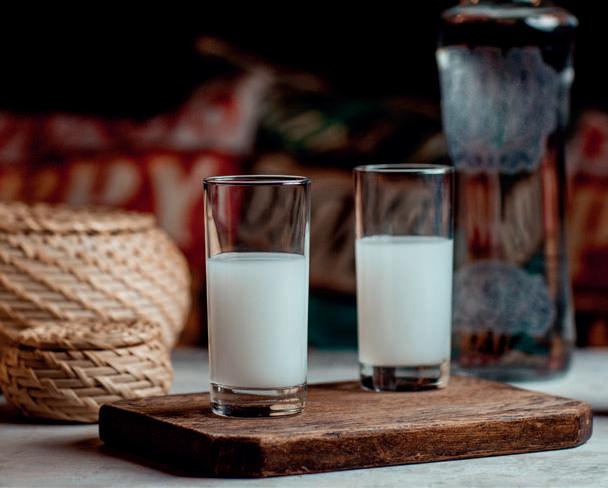
Mindfulness walking
Mindfulness caminando
Yolanda Cuevas
PSYCHOLOGIST AND MINDFULNESS EXPERT AT EKILU / PSICÓLOGA Y EXPERTA EN MINDFULNESS DE EKILU
Practising mindfulness always puts the body in the spotlight. Mindfulness walking consists of paying attention to the experience produced when walking. / La práctica de mindfulness hace siempre protagonista al cuerpo. El mindfulness caminando consiste en prestar atención a la experiencia que se produce al caminar.
2. Take 3 deep breaths to activate the attention and purify the air. Be aware of your posture, your feet, their support on the ground, the weight in the legs and any other feeling, such as temperature and your own breathing.
3. Start to walk slowly and in a connected way. Notice the movement of the feet, legs, body and feelings, deactivating the automatic pilot mode of being in a hurry.
Observe the three phases of the foot leaving the ground, first lifting the heel, then the middle of the foot and then the toes; and then the same phases when putting the foot back on the ground.
Observe that moment of movement in the air, the balance required and how the other foot holds the weight and keeps the body balanced. Meanwhile, the movement of your arms, your face and the rest of your body remain relaxed.
2. Realiza 3 respiraciones profundas para activar la atención y sanear el aire. Toma conciencia de tu postura, de los pies, de su apoyo en el suelo, del peso en las piernas y cualquier otra sensación como de temperatura y de la propia respiración.
3. Comienza a andar de manera lenta y conectada. Atiende al movimiento de pies, piernas, cuerpo y sensaciones, desactivando el piloto automático de la prisa.
Observa las tres fases en la que se despega el pie del suelo, primero levantando el talón, después la parte media y al final los dedos; y posteriormente las mismas fases al apoyarlos de nuevo en el suelo.
Observa ese momento de desplazamiento en el aire, el equilibrio necesario y cómo el otro pie sostiene el peso y mantiene el equilibrio corporal. Mientras tanto, el movimiento de los brazos, tu cara y el resto del cuerpo permanecen relajados.
You can do it in nature, at home, at work... Preferably alone. If you find yourself in a small space, try to walk with bare feet or just wearing socks and try to move more slowly, like a slow motion camera, to connect with the whole process: necessary movements, body parts involved, feelings... In general, observe how your body and mind behave when moving.
The steps are:
1. Bare foot, stand up and balance yourself with your legs slightly apart. Keep your eyes semi-open, with a relaxed gaze and without looking at your feet.
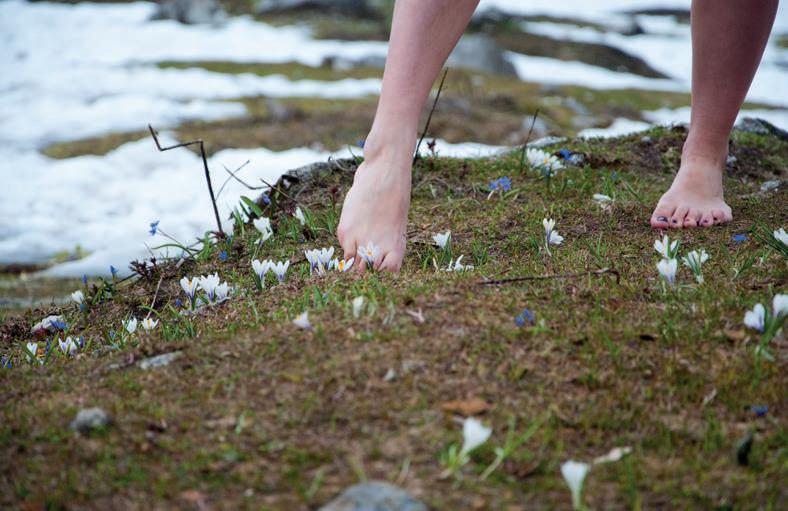
Puedes realizarla en la naturaleza, en casa, en el trabajo... preferiblemente a solas. Si te encuentras en un espacio limitado, trata de realizar el recorrido descalzo o con calcetines y prueba a moverte más despacio, como a cámara lenta, para conectar con todo el proceso: movimientos necesarios, partes corporales implicadas, sensaciones… y en general observar cómo se comportan tu cuerpo y tu mente en el desplazamiento.
Los pasos son:
1. Descalzo, colócate de pie, de forma equilibrada con las piernas ligeramente separadas Los ojos permanecen semiabiertos, con la mirada relajada y sin mirar a los pies.
4. When distractions appear in the form of thoughts, feelings, emotions...take note of them and in a loving way, return your attention to your body, the feelings and the movement, step by step, no longer paying attention to the mind.
If you do this in a natural setting, pay attention by alternating the steps described for 5 or 10 minutes with another 5 or 10 minutes of complete observation of the surroundings using the senses. Connect with what you see: the sea, trees, grass... with what you hear: water, wind, rain.... with what you smell: sea, forest, moisture, flowers… and your body sensations: hot, cold, relaxation, tension....
I invite you to look for moments to connect with this mindful walking, deactivate the automatic pilot and activate paying attention to the body.
4. Cuando las distracciones aparezcan en forma de pensamientos, sentimientos, emociones… date cuenta y de manera amable vuelve al cuerpo, a las sensaciones y al movimiento, paso a paso, dejando de prestar atención a la mente.
Si la práctica la realizas en un entorno natural, presta atención alternando los pasos descritos unos 5 o 10 minutos con otros 5 o 10 minutos de plena observación del entorno por medio de los sentidos. Conecta con lo que ves: el mar, árboles, césped… con lo que oyes: agua, viento, lluvia… con lo que hueles: mar, bosque, humedad, flores… y con tus sensaciones corporales: calor, frío, relajación, tensión…
Te invito a que busques momentos para conectar con este caminar consciente, desactivar el piloto automático y activar la atención al cuerpo.









